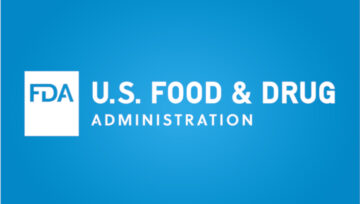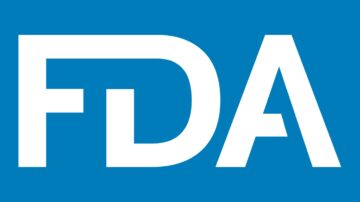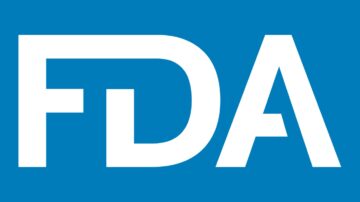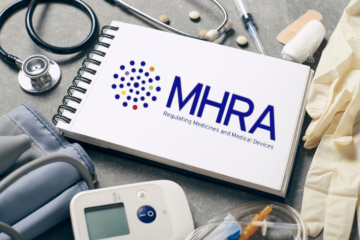The new article highlights the aspects related to the approach to be applied when assessing the changes and the impact they have on the actual performance of the test system in question, as well as the safety of patients.

Table of Contents
The Food and Drug Administration (FDA or the Agency), the US regulating authority in the sphere of healthcare products, has published a guidance document dedicated to replacement and reagent and instrument family in the context of in vitro diagnostic (IVD) medical devices. The document provides additional clarifications regarding the regulatory approach to be applied, as well as recommendations to be followed by medical device manufacturers and other parties involved in order to ensure compliance thereto. At the same time, provisions of the guidance are non-binding in their legal nature, nor are intended to introduce new rules or impose new obligations. Moreover, the authority explicitly states that an alternative approach could be applied, provided such an approach is in line with the existing legislation and has been agreed with the authority in advance.
The scope of the guidance covers, inter alia the aspects related to replacement reagent policy.
Assay Key Components and Fundamental Test Principles
First of all, the document describes the approach to be applied with respect to the assessment for changes to the testing system operating principles and changes to the indications for use. According to the guidance, the first step in a manufacturer determining whether the Replacement Reagent Policy may be applicable in their specific situation is to confirm that the assay was previously cleared and the instrument was either previously cleared or is an instrument family member of an instrument that was previously cleared. Furthermore, the authority states that the assay manufacturer should determine whether the use of the cleared assay on the additional instrument would require changes that alter assay key components or fundamental test principles. As explained by the FDA, the said key components of the assay could include specific antigen-antibody or enzyme components, while the fundamental test principles include detection modes, measurement methods, as well as methods used for signal processing, data acquisition, and interpretation. According to the guidance, in case assay key components or fundamental test principles require certain changes in order for the assays in question to be used with another device, a new marketing submission will most probably be required since such changes could potentially impact the actual performance of a test system or interpretation of patient results, affecting the safety and effectiveness. Apart from the above cases, a new marketing submission will also be needed in case of changes to assay value assignment methods or calibration schemes, should such changes be expected to impact the test system performance. At the same time, such changes as modifications to outer cartridges or reagent preservatives most probably will not adversely impact the actual performance of the test system and its operating principles.
Instrument and Software Principles
Another important sphere addressed in the guidance relates to the software. In this respect, the authority mentions that the assay manufacturer should confirm that the principles of analysis of the instrument with which the assay will be intended for use are comparable to those of the instrument with which assay performance was demonstrated in a cleared 510(k). For instance, it should be demonstrated that both instruments subject to review have common detection and measurement methods, etc. In other words, it will be necessary to demonstrate that measuring capabilities are the same as in the case of the product covered by the respective 510(k) clearance. New marketing submissions will probably be required if the said condition is not met.
The authority additionally emphasizes that the Replacement Reagent Policy described herein applies only with respect to open systems. As further explained by the FDA, an open system has general-purpose features intended for use with a wide array of assay types that share a similar methodology (e.g., detection methods, processing, and interpretive software). The authority also mentions that the use of such a system is not usually limited to the specific type of reagents or analytes. Furthermore, if the same medical device manufacturer is responsible for the quality management systems for the instrument and the assay, such a system will be considered open for a specific manufacturer, even though it will not be open for any other manufacturer.
In terms of the software used in the course of operations of a medical device in question, the authority mentions that in case it requires additional modifications to be used with a new assay, a new marketing submission will most probably be required due to such modifications potentially affecting the actual performance of the test system, as well as its safety and effectiveness.
Changes to the Indications for Use
The guidance also describes the approach to be followed in case of changes to the indications for use. According to the guidance, the changes that will require a new marketing submission include, inter alia, the following ones:
- Change in output between qualitative, semi-quantitative, and quantitative results;
- Change in clinical sample type (such as serum to cerebrospinal fluid (CSF), urine, or whole blood); or
- Significant change in performance claims, such as a change in cut-off value, addition of a “high sensitivity” performance claim, or addition of POC use to a test system not previously cleared for such use.
The above examples are provided merely to illustrate the applicable approach and should not be deemed exhaustive. The authority also refers to a separate guidance document dedicated to 510(k) submissions for changes to an existing medical device for further clarification.
In summary, the present FDA guidance describes the way the impact of changes on the actual performance of a test system should be assessed when determining the regulatory status of such changes and deciding whether a new marketing submission will be required. The document highlights the key points to be considered when making such a determination and provides additional clarifications regarding specific types of changes.
How Can RegDesk Help?
RegDesk is a holistic Regulatory Information Management System that provides medical device and pharma companies with regulatory intelligence for over 120 markets worldwide. It can help you prepare and publish global applications, manage standards, run change assessments, and obtain real-time alerts on regulatory changes through a centralized platform. Our clients also have access to our network of over 4000 compliance experts worldwide to obtain verification on critical questions. Global expansion has never been this simple.
Want to know more about our solutions? Speak to a RegDesk Expert today!
–>
- SEO Powered Content & PR Distribution. Get Amplified Today.
- EVM Finance. Unified Interface for Decentralized Finance. Access Here.
- Quantum Media Group. IR/PR Amplified. Access Here.
- PlatoAiStream. Web3 Data Intelligence. Knowledge Amplified. Access Here.
- Source: https://www.regdesk.co/fda-guidance-on-replacement-reagent-and-instrument-family-change-assessment/
- :has
- :is
- :not
- 1
- a
- About
- above
- access
- According
- acquisition
- actual
- addition
- Additional
- Additionally
- administration
- advance
- adversely
- affecting
- agency
- Alerts
- All
- also
- alternative
- an
- analysis
- and
- Another
- any
- apart
- applicable
- applications
- applied
- approach
- ARE
- Array
- article
- AS
- aspects
- assessed
- Assessing
- assessment
- assessments
- At
- authority
- BE
- been
- between
- blood
- both
- by
- CAN
- capabilities
- case
- cases
- centralized
- certain
- change
- Changes
- claim
- claims
- clients
- Clinical
- Common
- Companies
- comparable
- compliance
- components
- condition
- Confirm
- considered
- context
- could
- course
- covered
- covers
- critical
- data
- Deciding
- dedicated
- deemed
- demonstrate
- demonstrated
- described
- Detection
- determination
- Determine
- determining
- device
- Devices
- document
- drug
- due
- e
- effectiveness
- either
- emphasizes
- ensure
- etc
- Even
- examples
- existing
- expansion
- expected
- expert
- experts
- explained
- family
- fda
- Features
- First
- fluid
- followed
- following
- food
- Food and Drug Administration
- For
- from
- fundamental
- further
- Furthermore
- general-purpose
- Global
- global expansion
- guidance
- Have
- healthcare
- help
- herein
- highlights
- holistic
- HTTPS
- if
- Impact
- important
- impose
- in
- In other
- include
- indications
- information
- instance
- instrument
- instruments
- Intelligence
- intended
- interpretation
- introduce
- involved
- IT
- ITS
- Key
- Know
- Legal
- Legislation
- Limited
- Line
- Making
- manage
- management
- management system
- Manufacturer
- Manufacturers
- Marketing
- Markets
- max-width
- May..
- measurement
- measuring
- medical
- medical device
- medical devices
- member
- mentions
- merely
- met
- Methodology
- methods
- modes
- Modifications
- more
- Moreover
- most
- Nature
- necessary
- needed
- network
- never
- New
- nor
- obligations
- obtain
- of
- on
- ones
- only
- open
- operating
- Operations
- or
- order
- Other
- our
- output
- over
- parties
- patient
- patients
- performance
- Pharma
- platform
- plato
- Plato Data Intelligence
- PlatoData
- PoC
- points
- policy
- potentially
- Prepare
- present
- previously
- principles
- probably
- processing
- Product
- Products
- provided
- provides
- publish
- published
- qualitative
- quality
- quantitative
- question
- Questions
- real-time
- recommendations
- refers
- regarding
- regulatory
- related
- replacement
- require
- required
- requires
- respect
- respective
- responsible
- Results
- review
- rules
- Run
- Safety
- Said
- same
- schemes
- scope
- separate
- Serum
- Share
- should
- Signal
- similar
- Simple
- since
- situation
- Software
- Solutions
- Sources
- speak
- specific
- standards
- States
- Status
- Step
- subject
- submission
- Submissions
- such
- SUMMARY
- system
- Systems
- terms
- test
- Testing
- that
- The
- their
- they
- this
- those
- though?
- Through
- time
- Title
- to
- type
- types
- us
- use
- used
- usually
- value
- Verification
- want
- was
- Way..
- WELL
- when
- whether
- which
- while
- whole
- wide
- will
- with
- words
- worldwide
- would
- you
- zephyrnet












